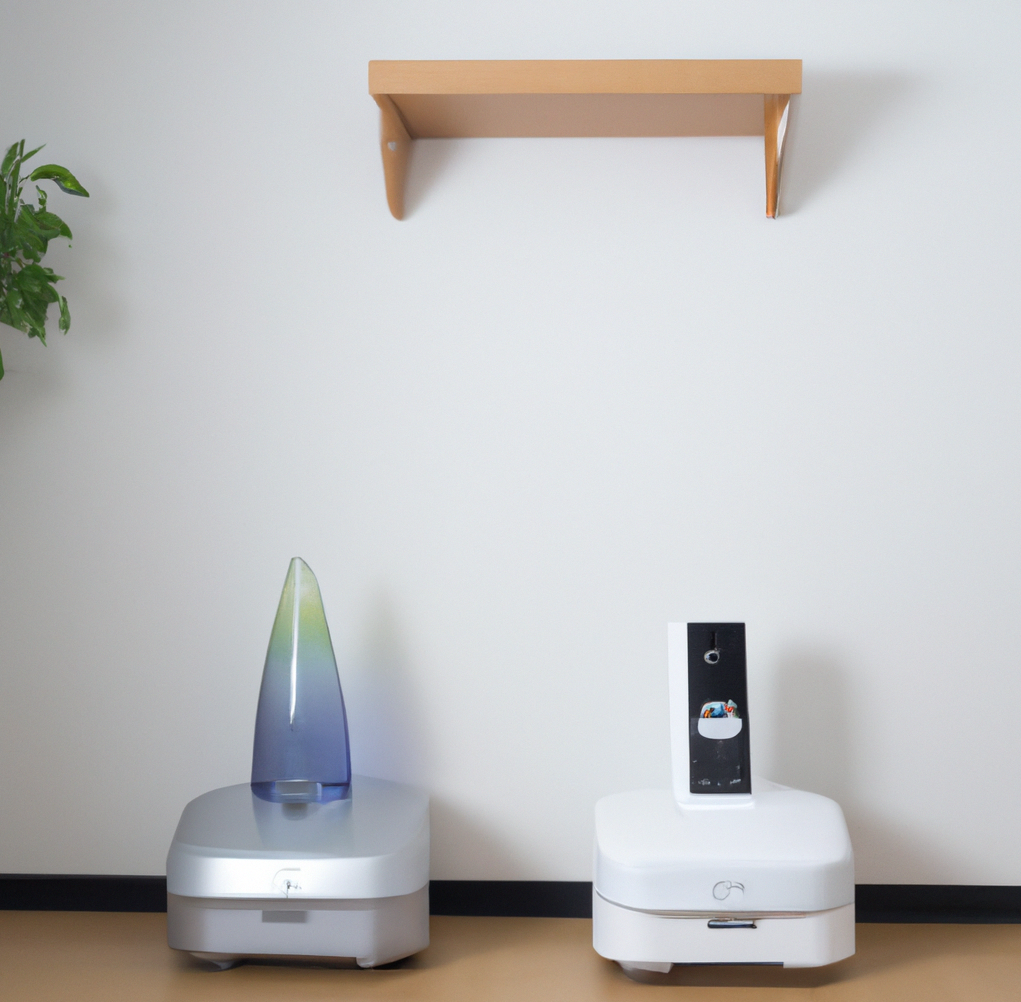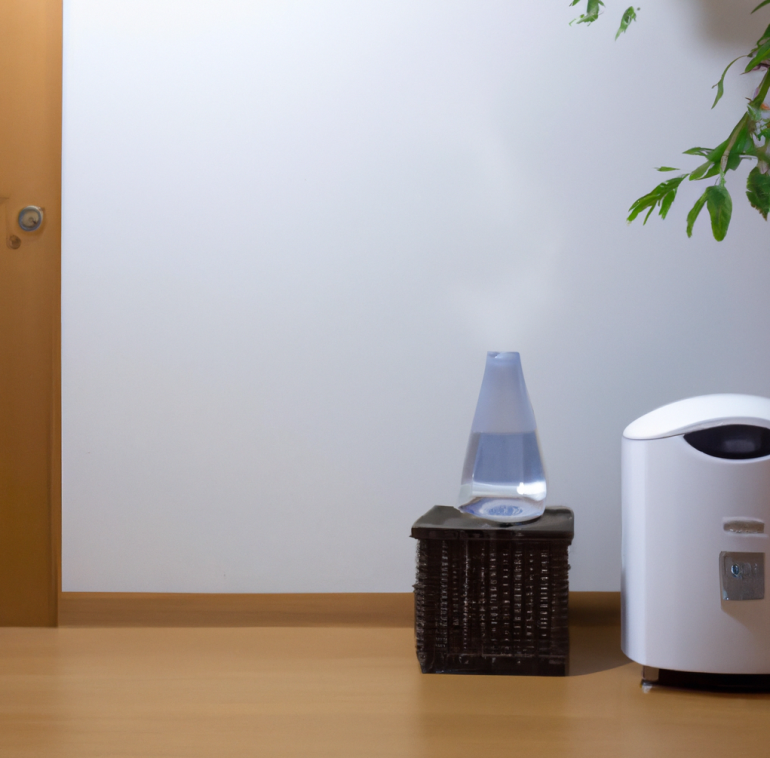If you’ve ever wondered about the difference between dehumidifiers and humidifiers, you’re not alone. These two devices play a crucial role in regulating humidity levels in our indoor environments. In this article, we’ll dive deep into the subject matter to help you understand the basics, pros and cons, and the suitability of each device for different environments. So, let’s get started! What do you need a humidifier or dehumidifier?
Dehumidifiers: Decreasing the Level of Humidity in Your Home
Dehumidifiers are designed to remove excess moisture from the air, making it more comfortable to breathe. They’re especially useful in areas with high wetness levels, such as basements, bathrooms, and laundry rooms. By reducing humidity, dehumidifiers can prevent the growth of mould, mildew, and dust mites, which thrive in damp conditions.
One of the key benefits of using a dehumidifier is improved indoor air quality. High humidity can lead to musty odours and the proliferation of allergens, making it uncomfortable for individuals with respiratory issues. By maintaining relative humidity, dehumidifiers create a healthier and more pleasant living environment.
Humidifiers: Adding Moisture for Comfort
On the other end of the spectrum, we have humidifiers, which add moisture to the air. These devices are particularly beneficial in spaces with low humidity levels, such as during the winter months or in arid climates. Humidifiers can help alleviate dry skin and irritated nasal passages, and even reduce snoring.
By increasing humidity, humidifiers can also provide relief from respiratory conditions like allergies and asthma. The added moisture can soothe dry and itchy throats, making it easier to breathe. Additionally, humidifiers can help protect wooden furniture, musical instruments, and other items susceptible to drying out in low-humidity environments.
Making an Informed Decision: Humidifier or Dehumidifier
When it comes to choosing between a dehumidifier or a humidifier, it’s essential to consider the specific needs of your environment. Here are a few factors to keep in mind:
- Humidity Levels: Determine whether your space has high or low wetness levels. If you notice condensation on windows, musty odours, or visible mould growth, a dehumidifier may be the right choice. Conversely, if you experience dryness, static electricity, or frequent respiratory issues, a humidifier can provide the relief you need.
- Room Size: Consider the size of the specific room or area you want to treat. Both devices come in various sizes, each with a recommended coverage area. Choosing the right size ensures optimal performance and efficiency.
- Noise Level: Some dehumidifiers or humidifiers can produce noise while operating. If you plan to use the device in a bedroom or other quiet spaces, look for models with low noise levels to ensure a peaceful environment.
- Maintenance: Both humidifiers and dehumidifiers require regular maintenance to ensure optimal performance and prevent the growth of bacteria or mould. Consider the ease of cleaning and maintaining each device before making a decision.
- Energy Efficiency: Energy consumption is an important consideration for both environmental and cost-saving reasons. Look for energy-efficient models that can effectively regulate moistness levels without excessive power usage.
Finding the Perfect Balance: Dehumidifier vs Humidifier

It’s clear that finding the right balance of indoor humidity is essential for optimal comfort and health. It’s all about understanding your environment, assessing your needs, and making an informed decision.
The first step in choosing the right device is to assess the current conditions of the room. Is the air too humid or too dry? This will determine whether you need a dehumidifier or a humidifier. Excess humidity can lead to mould growth, musty odours, mist and discomfort, while dry air can cause dry skin, allergies, and respiratory issues. By understanding your specific needs, you can narrow down your options and find the device that will best address your concerns.
Tips for Using Dehumidifiers and Humidifiers Effectively
To ensure you get the most out of your dehumidifier or humidifier, here are some tips:
- Monitor Humid Levels: Invest in a hygrometer to measure the humidity in your space accurately. For most people, a humid level between 30% and 50% is considered comfortable.
- Regular Maintenance: Clean your device regularly to prevent the build-up of mould or bacteria. Follow the manufacturer’s instructions for maintenance and filter replacement.
- Positioning Matters: Place your dehumidifier or humidifier in an area that maximizes its effectiveness. Consider factors such as airflow and proximity to moisture sources.
- Use Timers: Set timers on your device to ensure it operates only when necessary. This can help conserve energy and prevent over-drying or over-humidifying your space.
- Seek Professional Advice: If you’re unsure about the ideal humidity levels for your specific needs or have concerns about your indoor air quality, consult with a professional.
The Verdict: Which One Should You Choose?
Ultimately, the decision between a humidifier vs dehumidifier boils down to your specific circumstances and needs. Consider factors such as your climate, existing humidity levels, and any health concerns you may have. If you’re still unsure, it may be worth consulting with an expert who can provide personalized advice based on your situation.
Stay Informed and Make the Right Choice
Understanding the pros and cons of humidifiers and dehumidifiers is crucial when it comes to maintaining a comfortable and healthy indoor environment. By balancing the moisture levels in your space, you can create a living environment that promotes well-being and prevents the growth of harmful substances.
Remember, it’s all about finding the perfect equilibrium – not too dry, not too humid. So, take the time to assess your needs, explore your options, and make a knowledgeable decision. Your comfort and health deserve it.
Frequently Asked Questions
What is a Dehumidifier?
A dehumidifier is a device that helps remove moisture from the air. It is commonly used in areas with high humidity levels or places prone to dampness, such as basements, bathrooms, and laundry rooms. Dehumidifiers work by condensing the moisture in the air and collecting it in a reservoir or draining it away.
What is a Humidifier?
A humidifier, on the other hand, is an appliance that adds moisture to your indoor air. It is often used in places with low humidity levels, especially during the winter months when indoor heating systems can dry out the air. Humidifiers release water vapour into the air, increasing the humidity and helping to alleviate dryness and its associated problems, such as xeroderma, irritated nasal passages, and static electricity.
Which one do you need?
Whether you need a dehumidifier or a humidifier depends on the current condition and needs of your indoor environment. If you live in a region with high moisture or have areas in your home that are prone to moisture issues, a dehumidifier can be beneficial. On the other hand, if you struggle with dry air, especially during the winter or in arid climates, a humidifier would be more suitable.
How do dehumidifiers help with moisture control?
Dehumidifiers are specifically designed to remove excess moisture from the atmosphere, helping to combat problems such as mould and dampness. By reducing humidity tiers, dehumidifiers create a less favourable environment for mould and dust mites to thrive. They also help prevent condensation on windows and walls, reducing the chances of water damage and mould growth.
How do humidifiers help with dry air?
Humidifiers may add wetness to indoor air, increasing the humidity levels and improving overall comfort. Adding moisture to dry air can alleviate parched skin, dry throat, cough and irritated nasal passages. It can also help prevent the cracking of furniture, peeling wallpaper, and static electricity buildup.
What’s the difference in terms of how they operate?
The key difference lies in the way both appliances operate. Dehumidifiers extract moisture from the air using a refrigeration or absorption process and collect it. On the other hand, humidifiers work by boiling water to unleash moisture, releasing steam into the air and making it easier to breathe.
Are there dehumidifiers with air purifier functions?
Yes, certain dehumidifiers incorporate air purifier functionality, helping to remove not only excess moisture but also various airborne particles, allergens, and odours, thereby enhancing overall air in your home.

